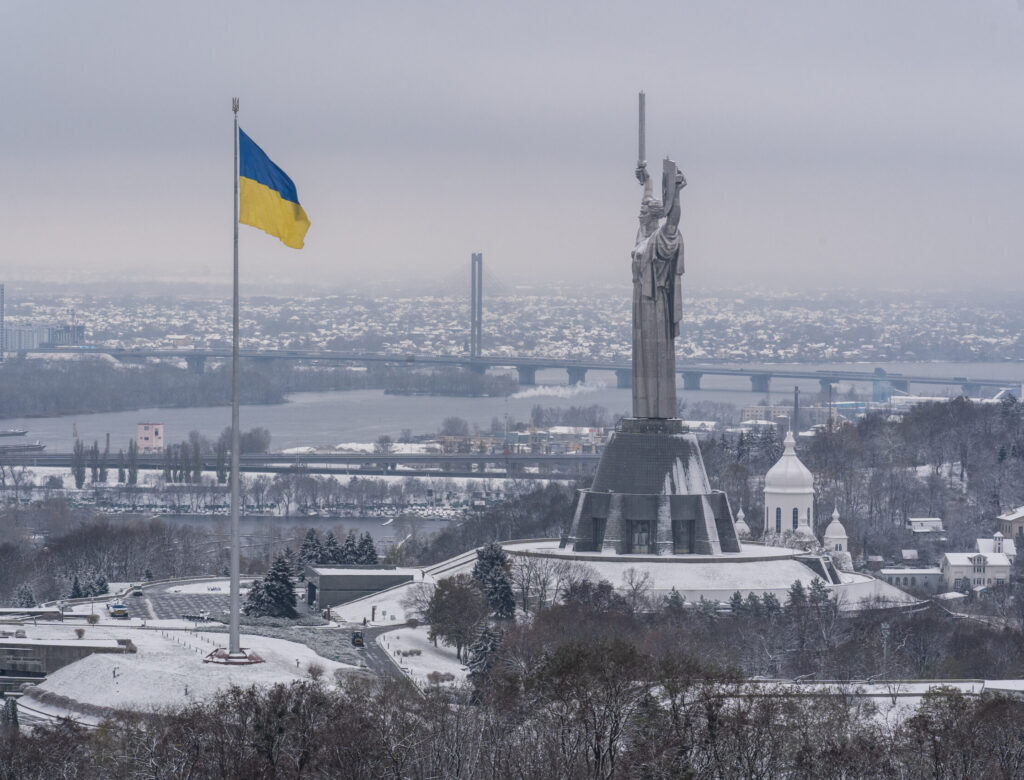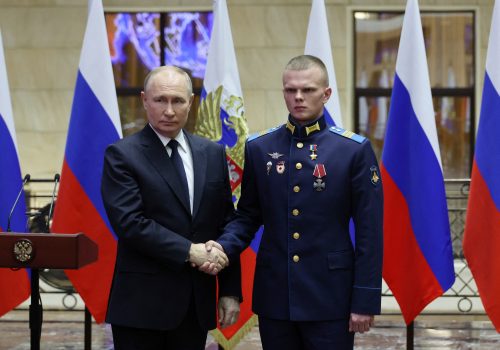Visitors to today’s Ukraine are often surprised to find that away from the front lines, everything looks so normal. Most people in central and western Ukraine have returned home. Shops and restaurants in towns and cities across the country are open and fully stocked. Everything functions, including mobile phone networks, internet, electricity, and public transport. Foreign credit cards can be used virtually everywhere and digital banking services are both advanced and near-ubiquitous. There is no rationing, nor is there any sign of price controls. If anything, people complain that life is a little too normal.
Signs of ordinary everyday life in wartime Ukraine are a reflection of the remarkable resilience demonstrated by Ukrainians since the onset of Russia’s full-scale invasion almost two years ago. This normality is also due to the little-noticed fact that the Ukrainian economy did surprisingly well in 2023.
Ukraine’s strong economic performance is reflected in recent EU and IMF assessments. These traditionally harsh reviews now read like love letters. “Despite the war, the country has benefited from a stronger-than-expected recovery and steadfast reform momentum,” noted the IMF in an entirely typical December 2023 summary.
The Russian invasion drove Ukraine’s GDP down by 29 percent in 2022, but in 2023 the economy grew by 19.5 percent year-on-year in the second quarter and by 9.5 percent in the third quarter. Rather than an expected stabilization, Ukraine is likely to achieve annual economic growth of nearly 6 percent in 2023. Admittedly, that still means a decline of around 25 percent from the prewar level in 2021. However, given the scale of the destruction caused by the Russian invasion and the fact that Russia still occupies around 17 percent of Ukraine’s territory, these figures are nevertheless impressive.
Stay updated
As the world watches the Russian invasion of Ukraine unfold, UkraineAlert delivers the best Atlantic Council expert insight and analysis on Ukraine twice a week directly to your inbox.
In the fall of 2022, many were concerned by the threat of rising inflation in Ukraine due to the EU’s failure to meet its commitments. Ukraine was forced to print money, and inflation rose to 27 percent in December 2022. The European Commission took heed and secured $20 billion in financing for 2023, covering around half of Ukraine’s budget requirements. The United States contributed another $10.9 billion, with the IMF providing $4.5 billion. In the end, Ukraine’s budget deficit of some $40 billion was more than financed. As a consequence, inflation plummeted to just five percent by October 2023.
Ukraine had budgeted for foreign financing of $41 billion in 2024, but as foreign funds may fall short, the country’s finance minister has suggested a revision down to $37 billion, not least because of greater than expected tax revenues. This revised figure may be realistic. The IMF noted that tax collections were up by 23 percent year-on-year in January-September 2023.
Usually, a country with an IMF program fails on some accounts, but that was not true of Ukraine in 2023. The IMF confirmed that Ukraine had met all quantitative performance criteria as well as all indicative targets by the end of September, and had done so with big margins, having collected much more in taxes than anticipated, while social spending continued as planned. Despite wartime conditions, Ukraine has not yet suffered from any arrears in state sector wages or pensions.
Ukraine’s National Bank has done particularly well since the start of Russia’s invasion. While inflation in Russia is currently around 7.5 percent, Ukraine’s rate has fallen to five percent. Ukraine recently cut its interest rate from 16 percent to 15 percent, while the Central Bank of Russia did the opposite.
Ukraine is maintaining a relatively open currency market with a floating exchange rate that held relatively stable throughout 2023. Ukraine’s international currency reserves are currently higher than they have ever been, at around $40 billion. The country’s banking system functions surprisingly normally. According to a recent IMF report, Ukraine’s total banking system assets and client deposits increased by 36 percent and 51 percent respectively between the start of Russia’s full-scale invasion and August 2023. Ukraine’s banks are flush with money and offer ample and cheap credits.
Eurasia Center events

Remarkably, Ukraine has carried out more systemic reforms than ever during the war. These reforms have been driven by the EU and the IMF, with keen support from the United States and the G7 group of nations.
On December 14, 2023, the EU decided to open membership negotiations with Ukraine. This landmark decision was based on Ukraine having fulfilled seven vital conditions set by the EU in June 2022. Four concerned the rule of law, while three were political. The most important conditions were the cleansing of the notoriously corrupt Constitutional Court and the similarly deficient Supreme Council of Justice, which appoints Ukraine’s judges. These steps are among the most important rule of law reforms ever implemented in Ukraine.
The EU appears to have learned from its excessively lenient earlier policies toward Bulgaria and Romania. Brussels now demands specific changes and details them. Ukraine has complied with all its demands, with President Zelenskyy signing off on the last three laws the week before the EU convened in December 2023.
In its most recent assessment, the IMF stated that the Ukrainian authorities had demonstrated “a strong commitment to reforms.” It noted that the authorities met seven of the 12 structural benchmarks for June-October 2023 on time, while four benchmarks were implemented with delays under very difficult circumstances. These were significant reforms related to corporate governance and anti-corruption measures. The law restoring asset declarations for public officials was enacted in October and public access to asset declarations was reinstated. Meanwhile, money-laundering legislation was tightened. The IMF’s key remaining demand is to render the special anti-corruption prosecutor truly independent from the prosecutor general.
Despite wartime conditions, the Ukrainian authorities are performing better than expected, both in terms of daily financial administration and advancing the country’s reform agenda. Higher than anticipated tax revenues are being collected, with pensions and wages so far paid on time. The nation’s currency reserves are larger than ever, and inflation has been brought down to five percent. Quietly, Ukraine has finally carried out important and politically challenging rule of law reforms. The Ukrainian government is to be congratulated for its considerable accomplishments on the economic front while defending itself against Europe’s largest invasion since World War II.
Anders Åslund is the author of “Russia’s Crony Capitalism: The Path from Market Economy to Kleptocracy.”
Further reading
The views expressed in UkraineAlert are solely those of the authors and do not necessarily reflect the views of the Atlantic Council, its staff, or its supporters.

The Eurasia Center’s mission is to enhance transatlantic cooperation in promoting stability, democratic values and prosperity in Eurasia, from Eastern Europe and Turkey in the West to the Caucasus, Russia and Central Asia in the East.
Follow us on social media
and support our work
Image: The Mother Ukraine monument, a large Ukrainian flag, the Dnipro River, and the residential area on the left bank are being viewed from the bell tower of Kyiv Pechersk Lavra in Kyiv, Ukraine, on November 22, 2023. (Photo by Oleksandr Khomenko/NurPhoto)





